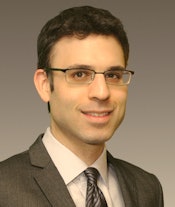
Patients are getting savvier about healthcare, often using social media or online searches to get information about particular exams or procedures. So what can the Internet tell us about patient interest in cancer screening, specifically imaging-based exams?
Analyzing Internet search trends can provide high-level perspective that may help radiologists better understand their patients, according to a new study published in the January edition of the American Journal of Roentgenology.
 Dr. Andrew Rosenkrantz from NYU Langone Medical Center.
Dr. Andrew Rosenkrantz from NYU Langone Medical Center."Patients are inundated with information about cancer screening tests," lead author Dr. Andrew Rosenkrantz, from NYU Langone Medical Center, told AuntMinnie.com. "There's a lot of information published by the medical press and the lay press, not only about the exams themselves but also about debates and controversies in the medical field about the exams. And this often-conflicting information can lead to uncertainty for patients, which can fuel Internet searches."
Rosenkrantz and co-author Dr. Vinay Prabhu, also of NYU Langone, used Google Trends to analyze the frequency of searches for imaging-based cancer screening tests in the U.S. from 2004 to 2014. They sorted the data by monthly and geographic categories (AJR, January 2016, Vol. 206:1, pp. 113-118).
Overall, the two found increased public interest in breast tomosynthesis, lung cancer screening, prostate MR, and MR-guided prostate biopsy, while interest in mammography and virtual colonoscopy was flat or declined over the study time frame. Interest in cancer screening exams was linked to the publication of large clinical trial results, the release of new screening guidelines, and events related to public figures.
Additional results included the following:
- Searches for "mammography" tended to peak every October, which is Breast Cancer Awareness month, and hit a high in 2009, when the U.S. Preventive Services Task Force (USPSTF) released its updated screening guidelines. Searches for "tomosynthesis" have increased each year from 2009 to 2014.
- Searches for "lung cancer" spiked in August 2005, coinciding with the death of Peter Jennings due to the disease. This search term also had a spike in November 2010, when initial results from the National Lung Screening Trial were released.
- Search rates for the term "colon cancer" remained stable during the study time period, with three exceptions: Rates spiked in October 2007, September 2008, and March 2010, when results of large trials that had investigated the effectiveness of screening with virtual colonoscopy were released (2007 and 2008) and when President Barack Obama underwent the procedure (2010).
- Search rates for "prostate cancer" remained relatively flat throughout the study time period, although there was a dramatic increase in October 2011, when USPSTF released updated guidelines for prostate-specific antigen (PSA) screening.
Rosenkrantz and Prabhu also found that searches for imaging-based cancer screening test information tended to be concentrated in densely populated areas of the U.S.
| Searches by city for cancer and imaging-based screening terms | |
| Search term | Top 3 cities |
| Breast cancer | Baltimore Philadelphia Boston |
| Mammography | Richmond Nashville Cincinnati |
| Tomosynthesis | New York City (no other city had sufficient search volume) |
| Lung cancer | Boston Philadelphia Baltimore |
| Colon cancer | Louisville Baltimore Philadelphia |
| Prostate cancer | Baltimore Boston Philadelphia |
This clustering of searches for particular advanced tests in densely populated areas may indicate that access to these tests isn't equitable, Rosenkrantz and Prabhu wrote.
"These findings indicate a highly uneven geographic distribution of public interest in these tests, suggesting a consequent uneven distribution in the use of the given service as well," they wrote. "[The] clustering of searches for certain advanced tests in large cities raises concerns regarding the national penetration of new healthcare technologies and potential restricted access to such technologies outside the particular practice settings in which they are initially introduced."
In any case, the study findings may offer a window into patients' minds, according to Rosenkrantz.
"Examining patterns of variations in searches for information about particular exams, and variations by geography, could help us better understand patient interest in undergoing these tests," he said.




















